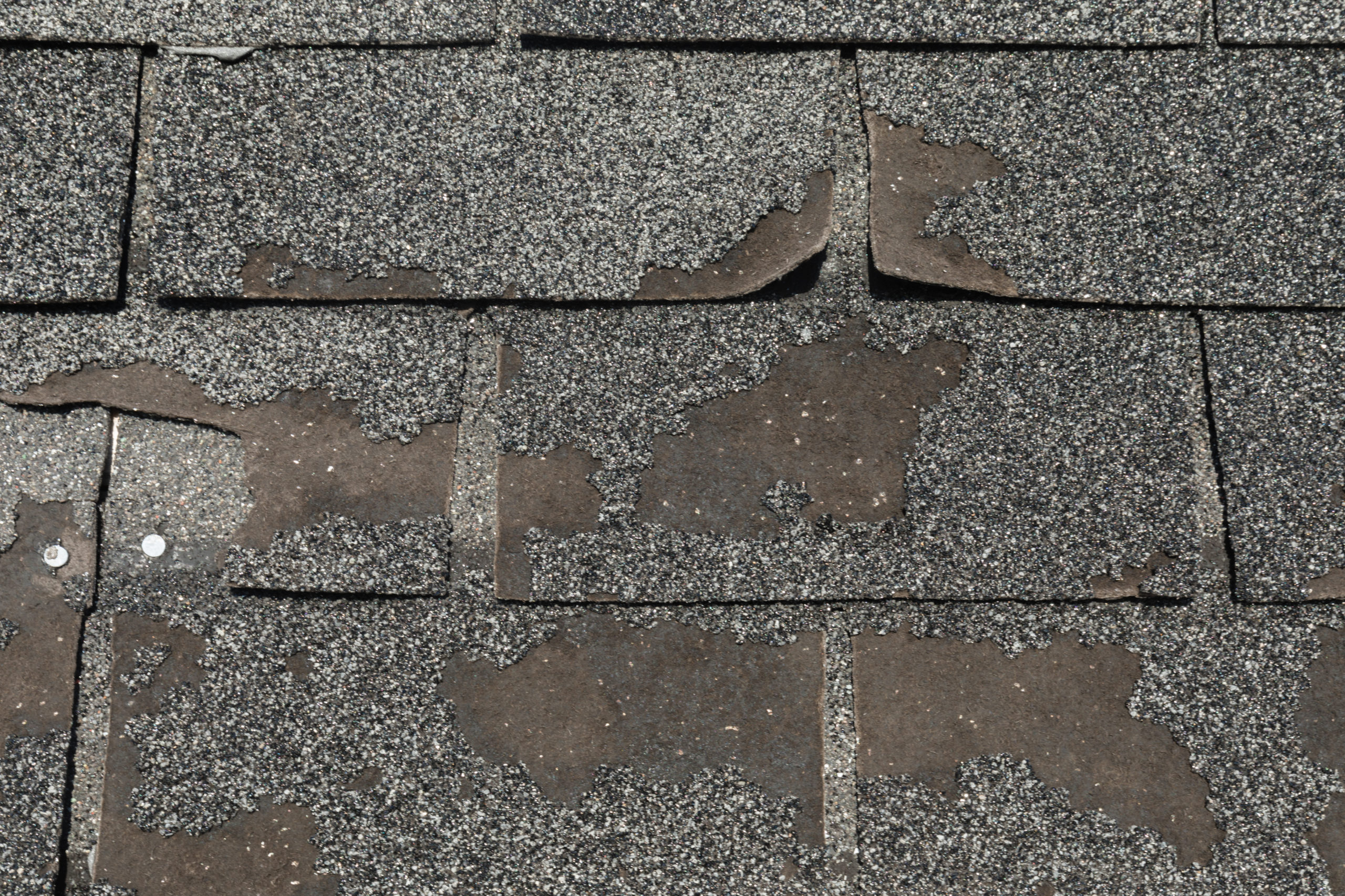Is your asphalt shingle roof system is looking a little worse for wear? Then high heat may be the cause. Here’s what you should know about hot weather and asphalt shingles.
1. THE SUN IS A SHINGLE’S WORST ENEMY
Asphalt shingles stand up extremely well to frigid temperatures, rain, snow, and ice. However, heat from the sun is a shingle killer. High temperatures prematurely age asphalt shingles. Dark color shingles typically heat up from 50 to 60 degrees Fahrenheit above the ambient temperature.
That means your asphalt shingles can reach temperatures of 160 degrees Fahrenheit on a 100-degree Fahrenheit day. The roofing shingles may remain at a sustained temperature of 160 degrees Fahrenheit for up to five hours if the shingles are exposed to direct sunlight.
While extra-high heat softens the asphalt shingles, ultraviolet rays break down the asphalt. For this reason, shingle manufacturers coat asphalt shingles with small granules on the upper surface. Over time, the granules loosen and fall away, leaving the asphalt at the mercy of the elements.
Repeated softening and hardening of asphalt shingles in high temperatures causes shingles to dry out and become brittle. The brittle shingles break off at the edges or burn through in spots, allowing water points of entry to get beneath the roof system.
2. ROOF VENTILATION IS KEY TO SHINGLE DURABILITY
Thin asphalt shingles last between 15 to 20 years, while thicker asphalt shingles have a useful life of around 30 to 40 years. However, asphalt shingles degrade faster than expected if the roof on which they’re installed is not properly ventilated.
Heat from asphalt shingles radiates upward and downward into the roof and attic of a home. Without adequate ventilation during hot weather, the excessive heat and moisture buildup lower the service life of a home’s felt roofing underlayment and asphalt shingles.
A well-ventilated roof system releases heat and moisture from the attic and roof structure. To achieve proper roof ventilation, your roof should have intake vents in the soffits under the eaves and exhaust vents towards the ridgeline. Warm air exhausting through the upper vents draws cooler air into the soffit vents, lowering the overall temperature of the attic space and roof system above.
While Arizona’s climate is drier than climates in other areas of the country, moisture rises into the attic and roof from household activities including showers and cooking. Proper venting (and perhaps even attic fans) provides the needed airflow to the attic and underside of the roof system to mitigate problems associated with moisture-related rot and degradation of underlayment and shingles.
3. NEW SHINGLES SEAL MORE QUICKLY IN HOT WEATHER
The good news is that hot weather helps new asphalt-shingle installations lay flat and look good faster than if the shingles were installed in cold weather. New asphalt shingles are often stiff and don’t lay perfectly flat when first installed. However, high heat softens the shingles and helps the glue strips on the shingles adhere to the roof surface and create a good seal.
Yet, this quick sealing time has its drawbacks. If the new shingles are placed on compromised felt underlayment, then the shingles may become compromised too. The felt may wrinkle in the heat, and these wrinkles may show up as uneven bumps and ridges, which may permanently distort shingles if they bond quickly to the underlayment.
To avoid wrinkled underlayment and related appearance issues with asphalt shingles, have your roof installed by professionals. It is critical that the felt underlayment be installed flat prior to installation of shingles.

